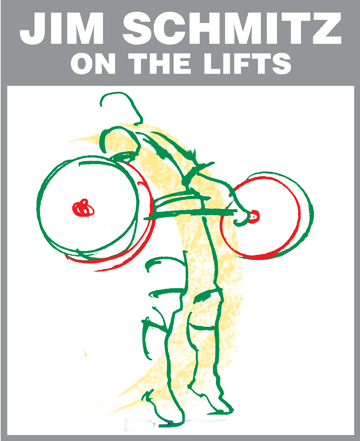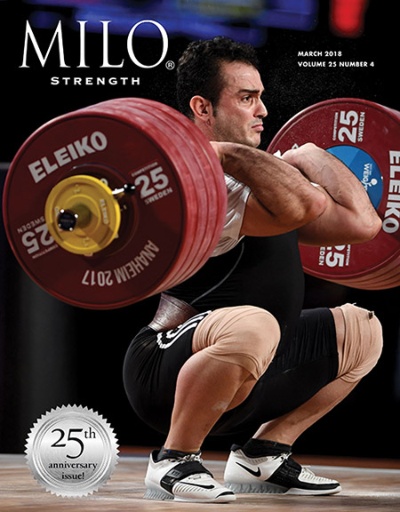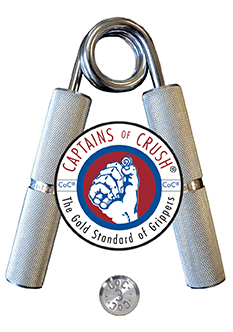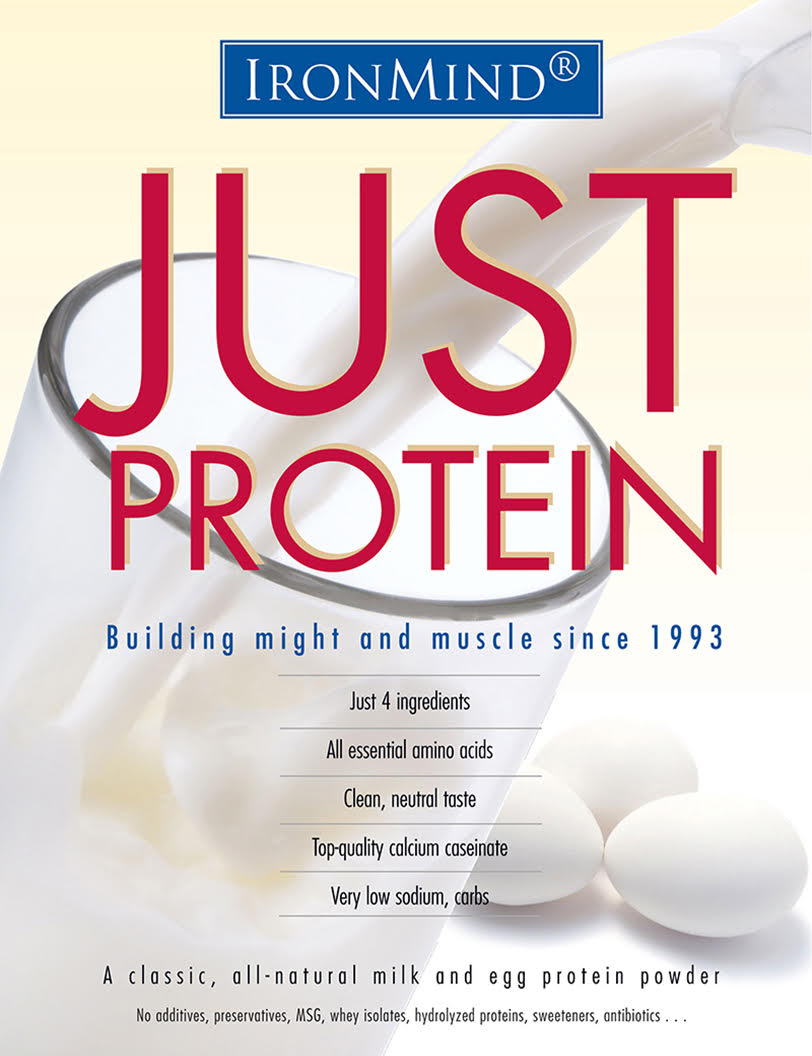
U.S. Olympic Weightlifting Team Coach 1980, 1988 & 1992 Author of Olympic-style Weightlifting for Beginner & Intermediate Weightlifters Manual and DVD
The clean deadlift and shrug (CDL&S) is one of best yet most underrated exercises of all time—not just for weightlifters, but for every person who can stand up. The CDL&S (as I will refer to it from now on) is a deadlift performed with an overgrip spaced about shoulder width, the same grip you would use if you were going to clean it; instead, however, you finish the movement by shrugging your shoulders and standing up on your toes, slowly. There are some nuances that make this movement different, therefore the CDL&S is not a deadlift or a clean pull, it is special.
Let me explain how to do the CDL&S in detail, as the start position is very important. First, take a hip- to shoulder-width foot stance, with your toes under the bar. Grab the bar with an overgrip about shoulder width, and flatten or arch your back as much as possible; your arms are straight, and your hips higher than your knees but lower than your shoulders. Your shoulders are slightly in front of the bar, and you are looking straight ahead. The bar is just grazing your shins, and your feet are flat on the floor. Do not begin the lift until you get the start position just right.
You can use a normal thumb-over-fingers grip, a hook grip (thumb around bar, fingers around thumb), or straps (canvas or leather straps that go around your wrist and then the bar). I recommend beginners use the normal thumb-over-fingers grip so they can develop their grip—the grip will give out before the back or other body parts.
Begin the lift by extending your hips, thighs, and back—maintain the position of the hips and shoulders, both rising at the same angle and in slow motion. Continue to lift up by shifting your hips forward and your back upward as the bar passes your knees, still in slow motion. When the bar is at the middle to upper thigh, fully extend your hips, knees, and ankles; shrug your shoulders; and rise up on your toes, still in slow motion. You should be standing as tall as you can on your toes, with your ankles, knees, and hips extended straight, arms straight, and your shoulders shrugged up as high as possible—or, as I like to say, “deltoids to the earlobes.” Hold this position for a half second and then lower the barbell under control and in slow motion, keeping the same strict form as when lifting up. This way, you get eccentric muscle development that is overloading the muscles as they lengthen. Once you have returned the barbell to the floor, get set and repeat—two to three reps are good.
Three very important things to really stress when doing this exercise are: 1) to do it in slow motion, or half speed; 2) keep your back flat or arched; and 3) keep your arms straight at all times. Be sure to stay flat-footed until the bar is around the top of the thighs, and then rise up on your toes and shrug your shoulders simultaneously. If your back begins to round, then you are going too heavy. The shrugging of the shoulders as high as possible and the rising up on the toes also as high as possible are two more unique and very important parts of the CDL&S. By shrugging and rising on the toes, you bring more muscles into play—and the more muscles you use in an exercise, the better the benefits to your body.
The main thing I like about this exercise is that it teaches you how to lift a barbell off the floor correctly, using the thighs, hips, and back together and in synchronization. It is a real strength developer and it really enforces correct pulling technique. It teaches pulling straight, keeping the bar close to your legs, balance, and the double knee bend, or scoop, as well. The double-knee bend, or scoop, is where your knees almost straighten as the bar passes them, and then rebend a bit and get underneath the bar as it rises to the middle of the thighs. At the same time, the upper body straightens up a bit just before the complete triple extension of the ankles, knees, and hips, and the shrugging of the shoulders. The CDL&S can also be done with dumbbells or kettlebells.
The CDL&S is an exercise that should be an integral part of every beginner’s program. This exercise should also be in every person’s weight training program, whether training for health and fitness, World’s Strongest Man, or the Olympics. I am always amazed that beginners—and even some intermediate lifters, athletes, and those in the general population—will attempt to pick up a weight, or any object for that matter, incorrectly. With bent arms, rounded back, hips higher than the shoulders, using too much back and not enough hips and legs, they then yank the weight off the floor.
I recommend doing the CDL&S after heavy clean and jerks, with 5 to 20 kg more than you cleaned and jerked in that workout—3 to 5 sets for 2 to 3 reps should be enough. For example, if you finished your clean and jerks with 150 kg, you might start your CDL&S with 155 x 2, 160 x 2, 165 x 2; or you might do 3 sets at 165 and increase to 170 and 175. Always remember, the back must stay flat.
If you want to turn this lift into a cardio workout, do sets of 5 to 10 reps with a weight less than you clean and jerk. It will surprise you how much you’ll sweat and increase your heart and respiration rates. When doing high reps, you must still do the lift in slow motion, keeping your back flat and your arms straight. One of my coaching cues is “back straight, arms straight, pull straight.”
When I’m teaching the CDL&S I can’t stress the flat back enough, so I tell lifters to remember the AFLAC insurance TV commercial where the duck is always saying “AFLAC, AFLAC.” I tell them he is actually saying, “BACK FLAT, BACK FLAT!”

















